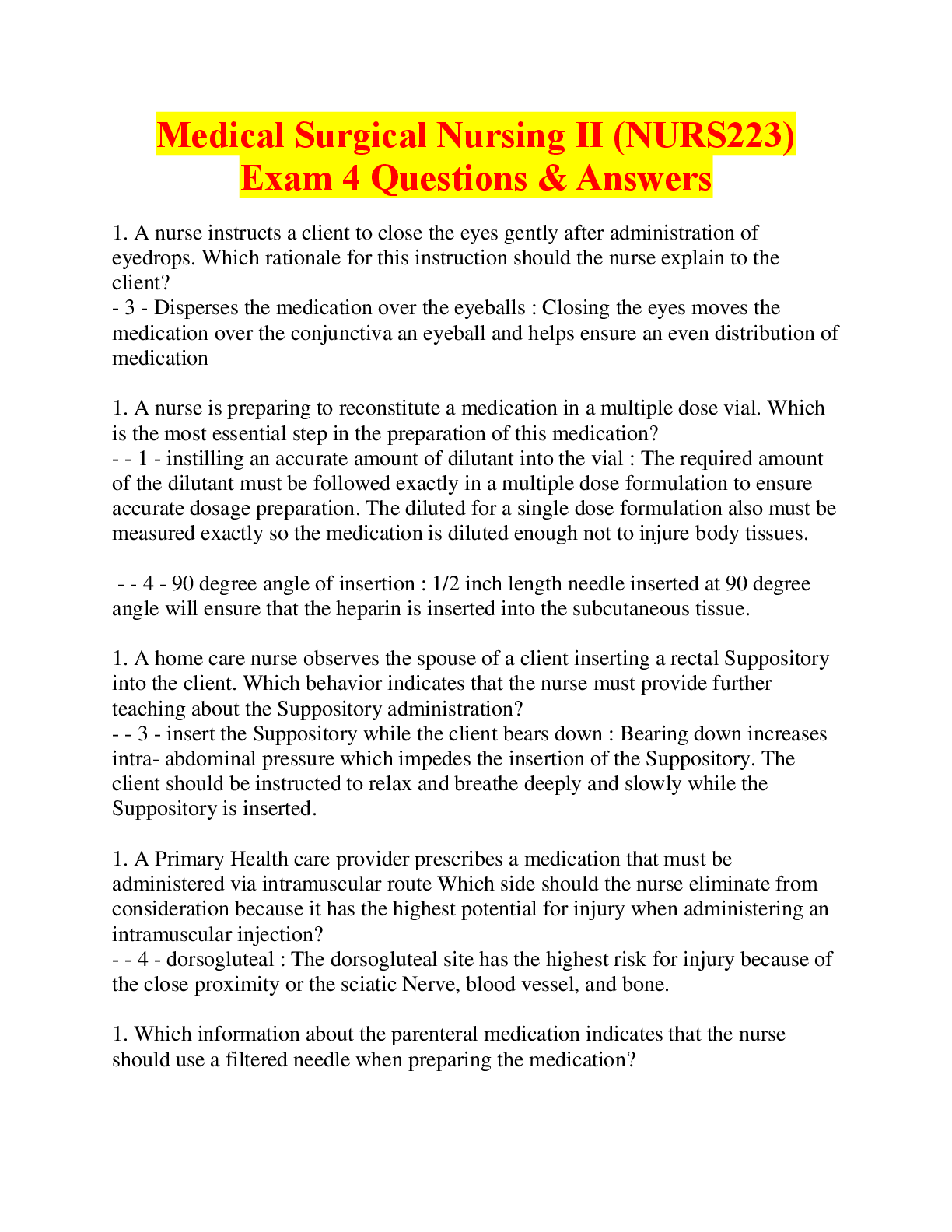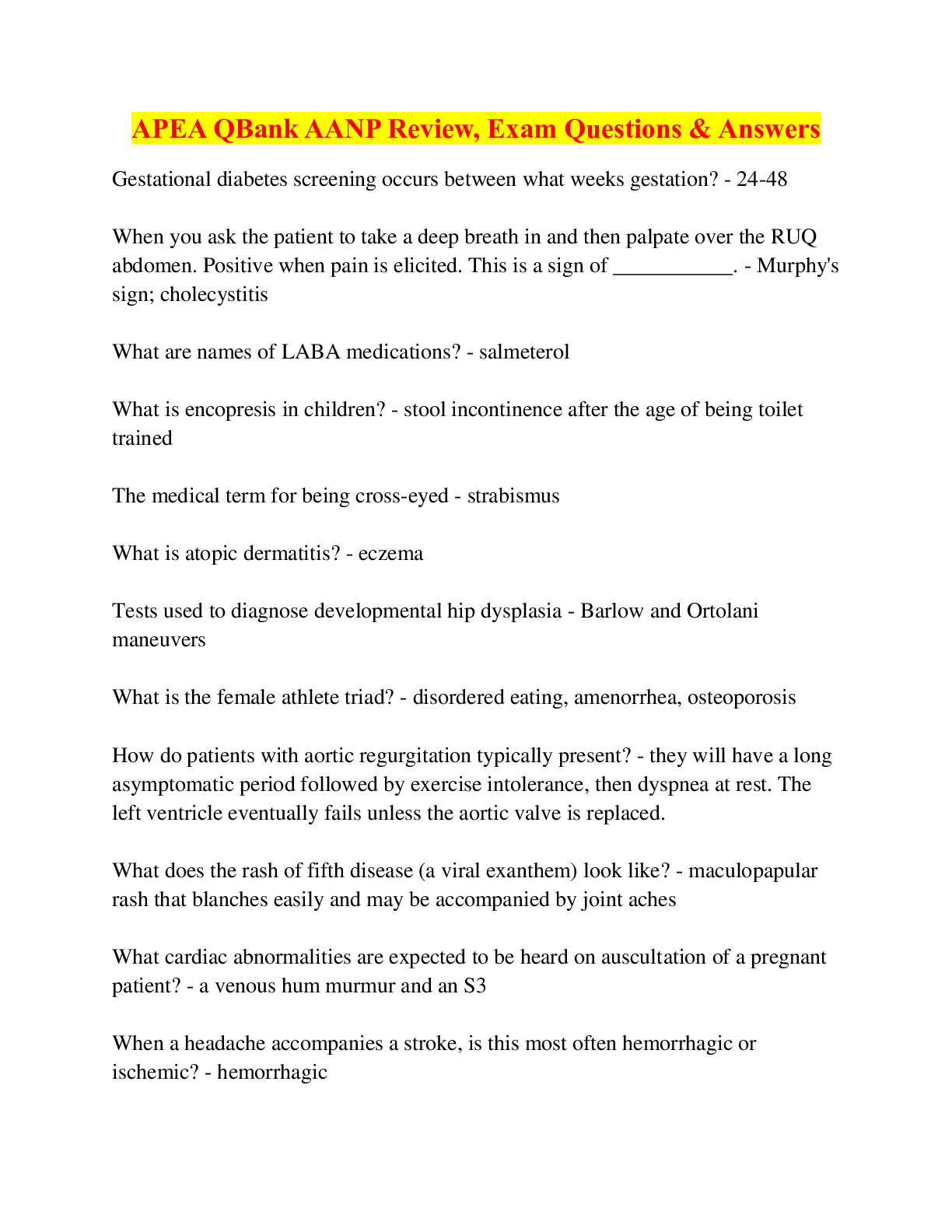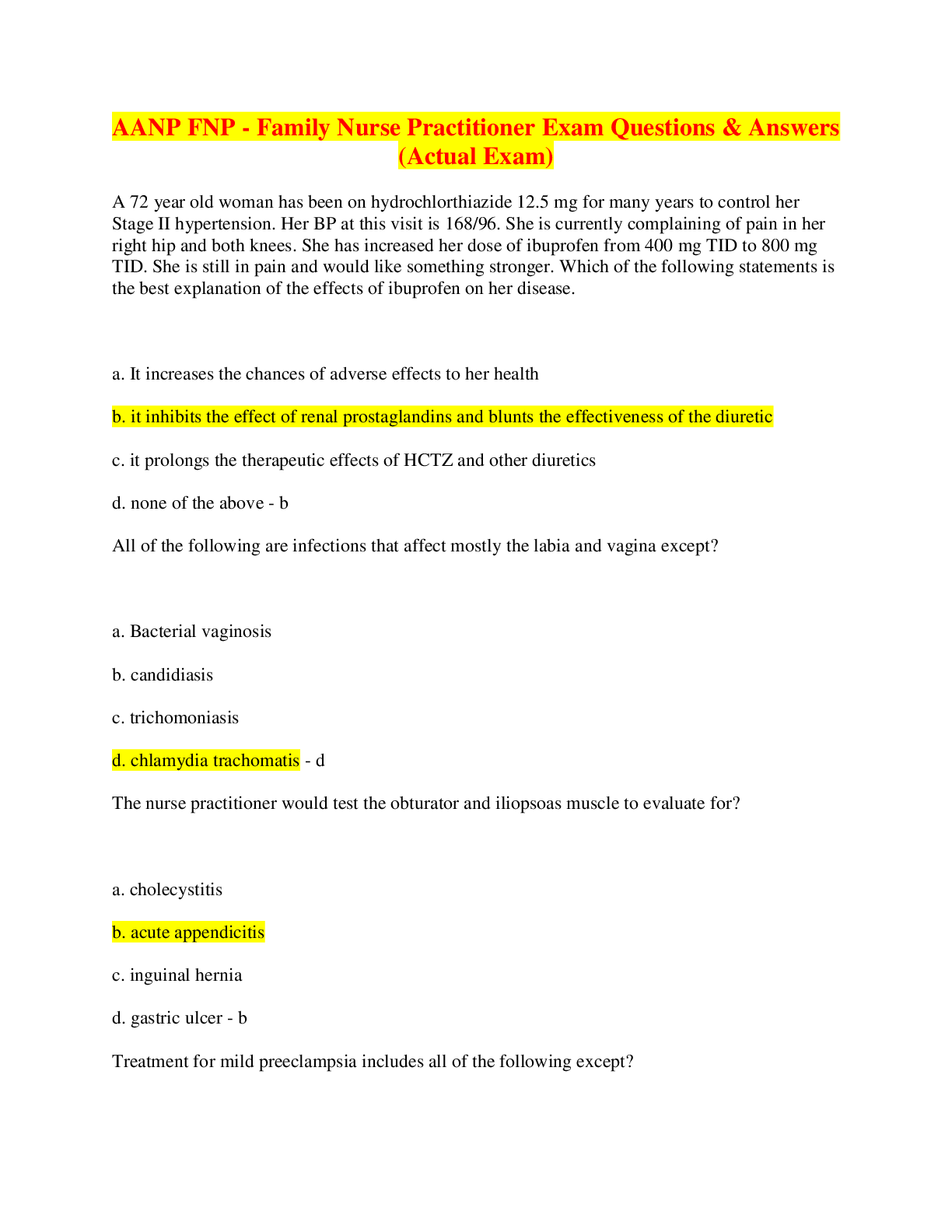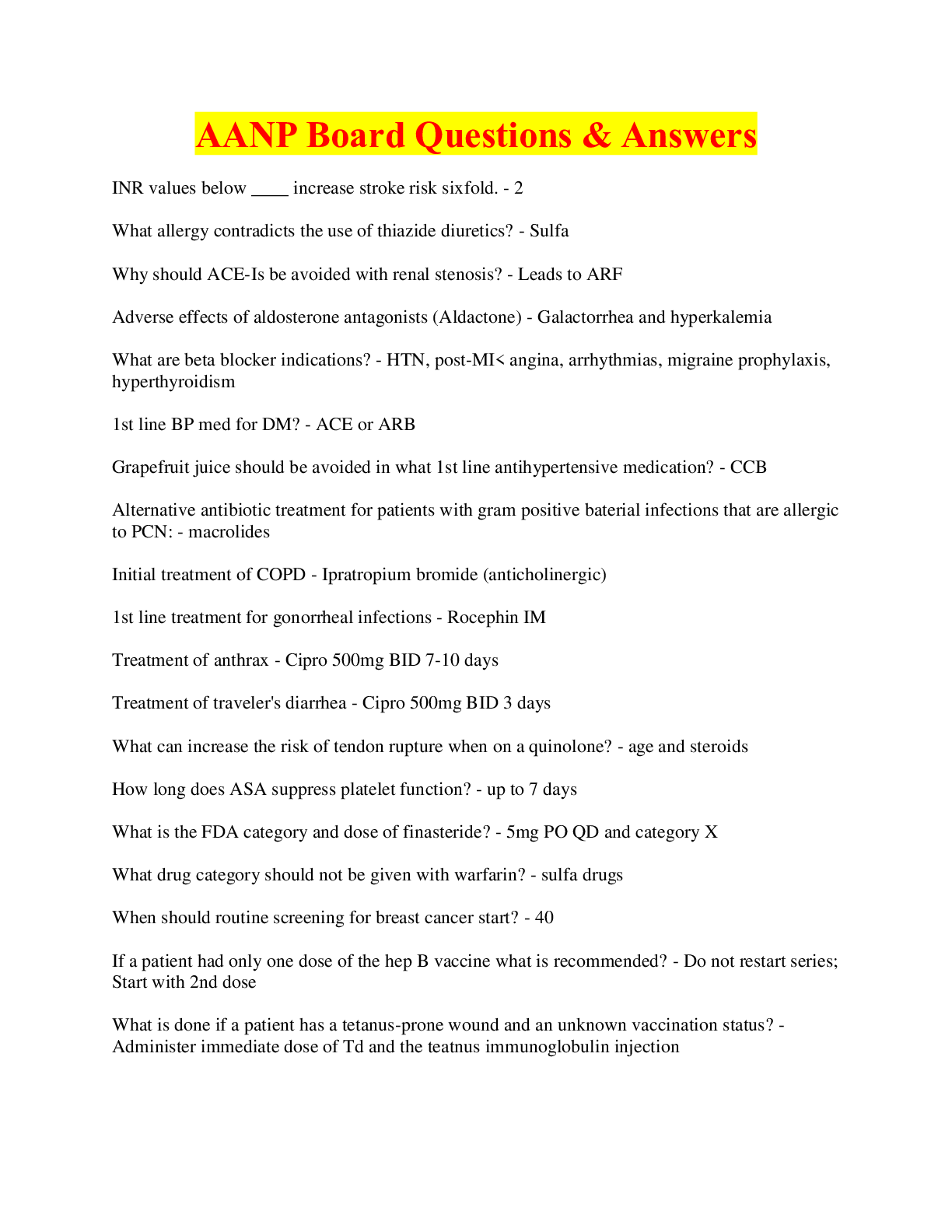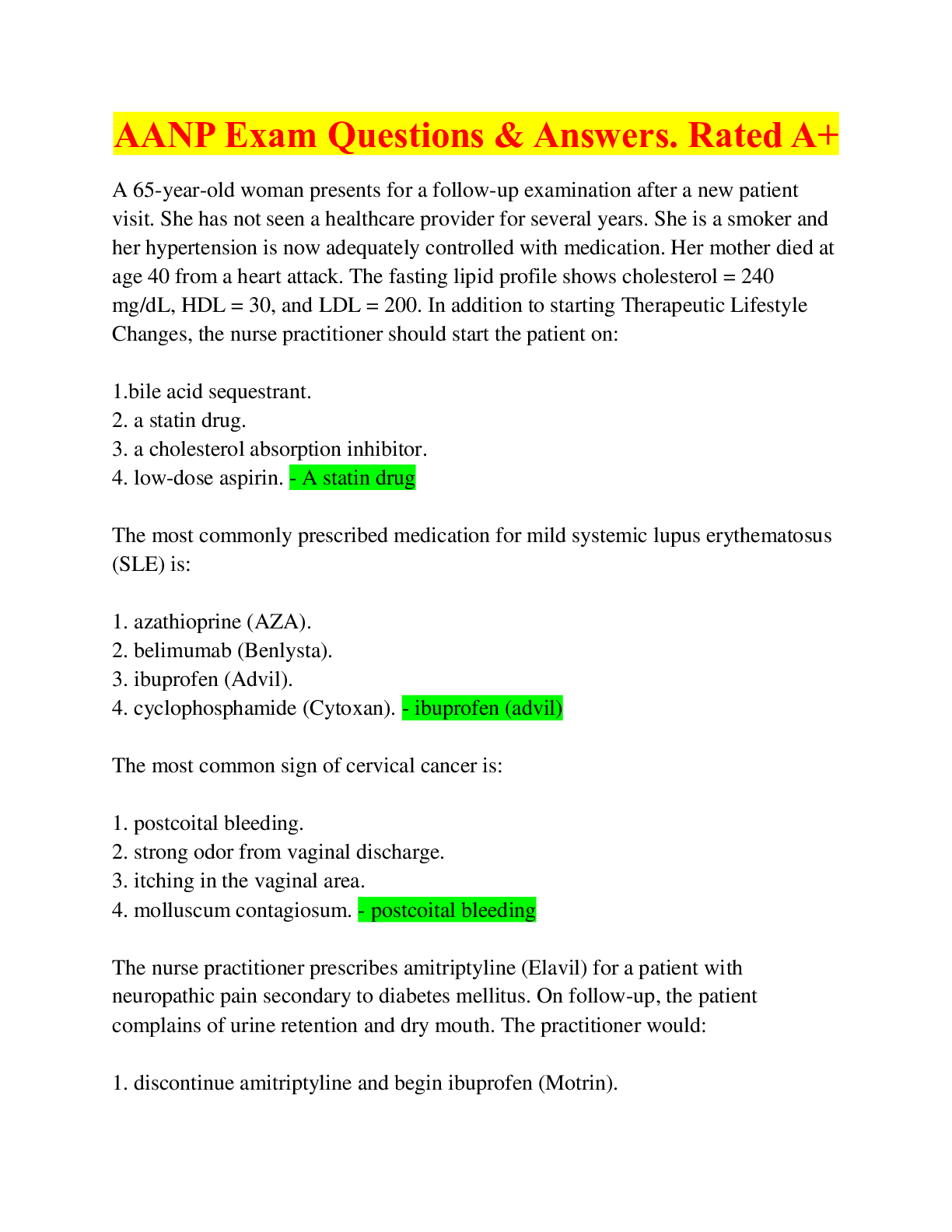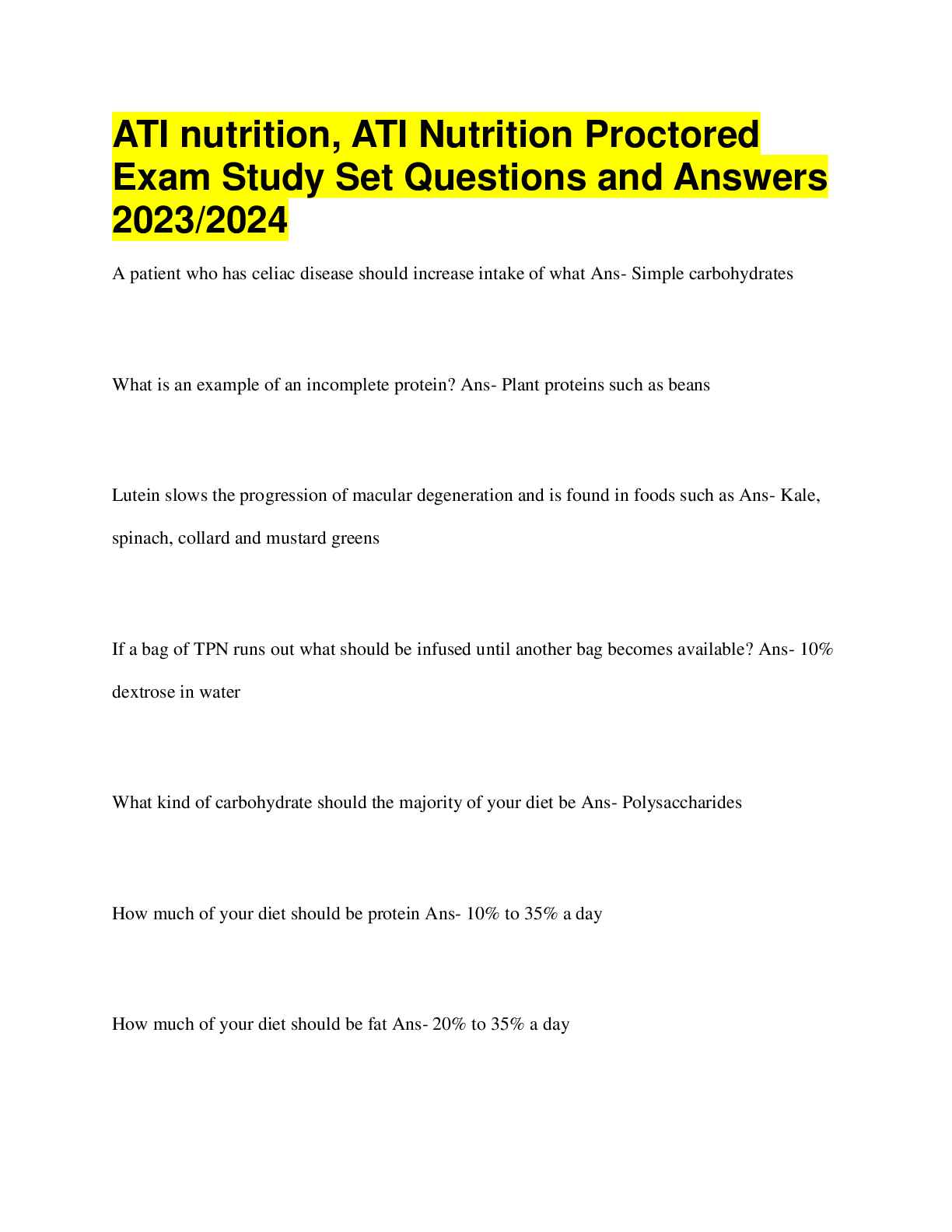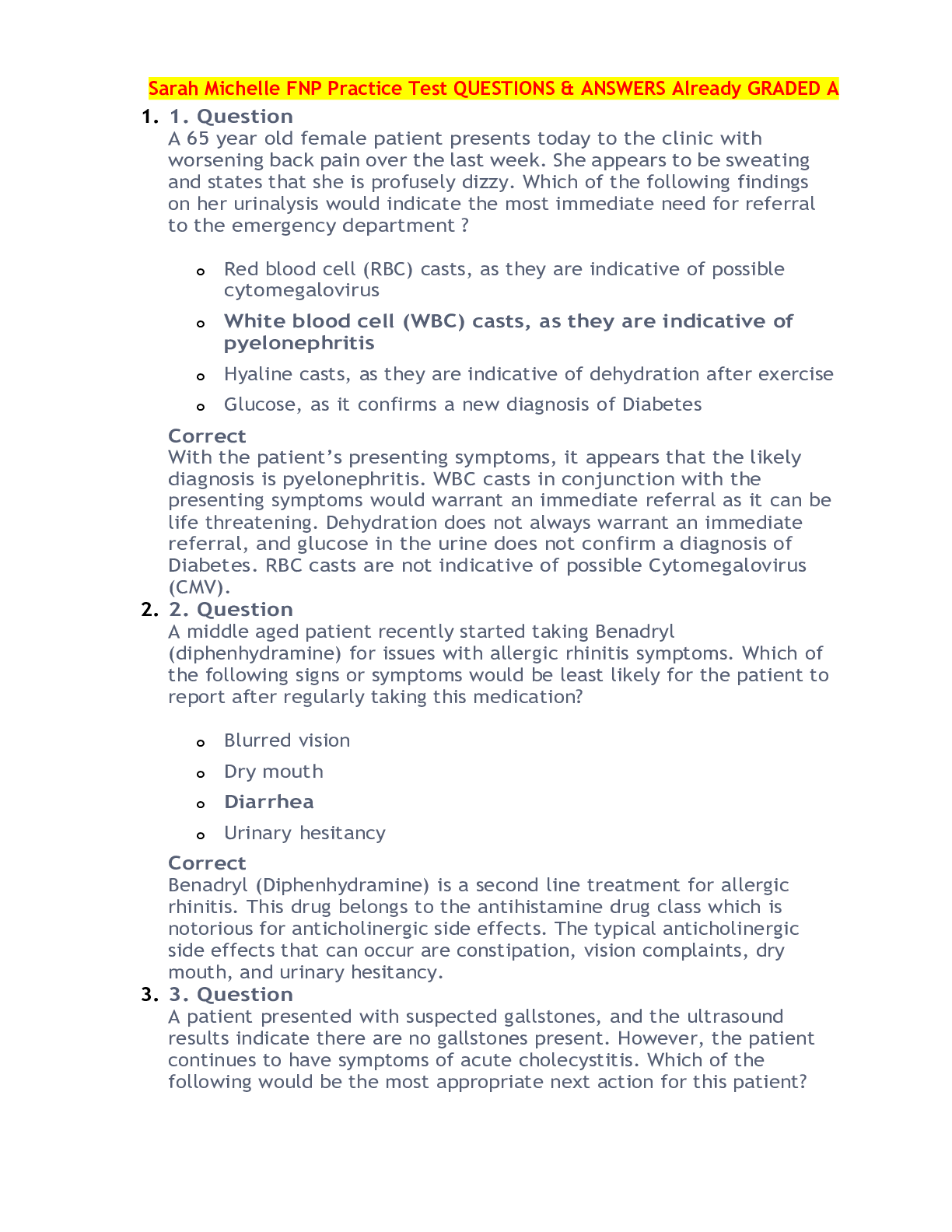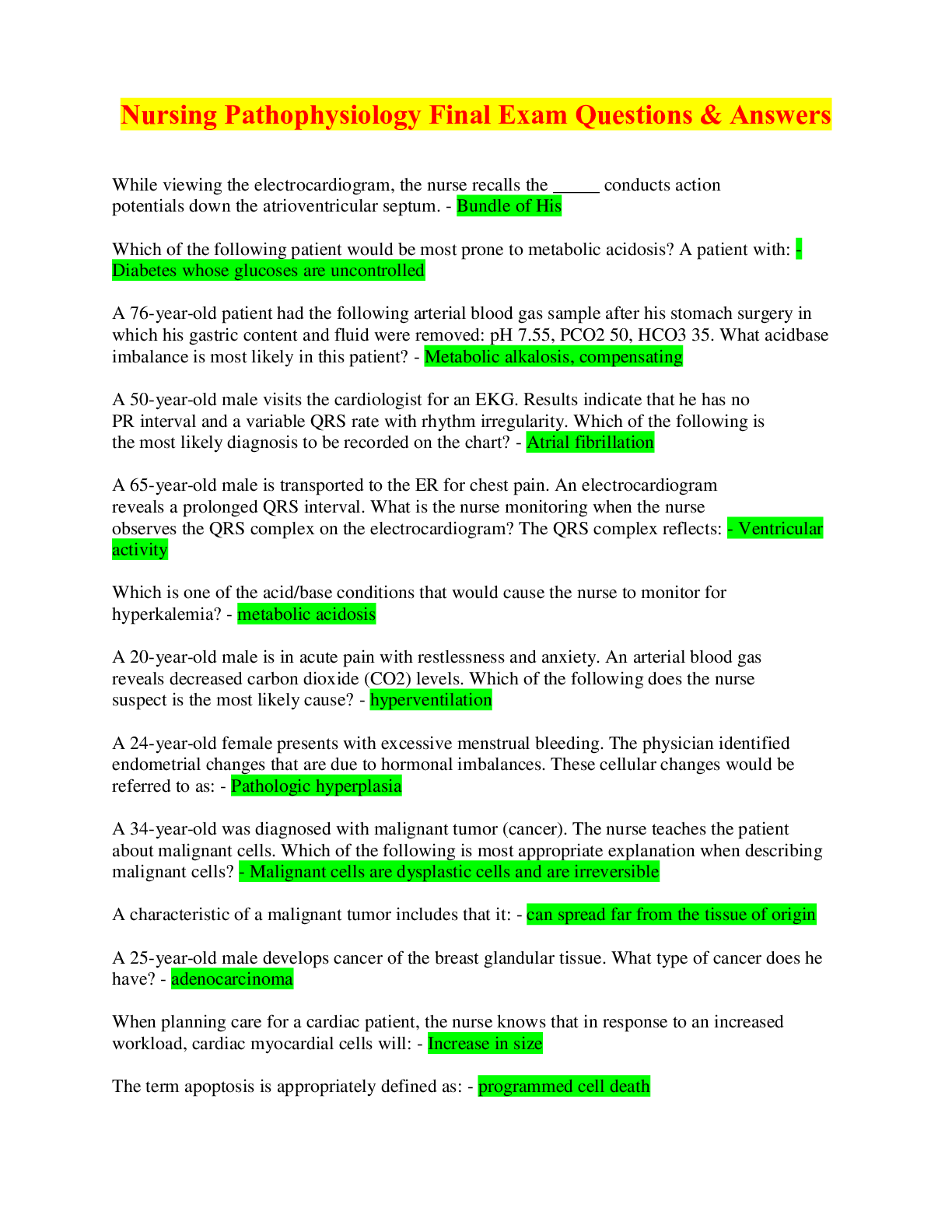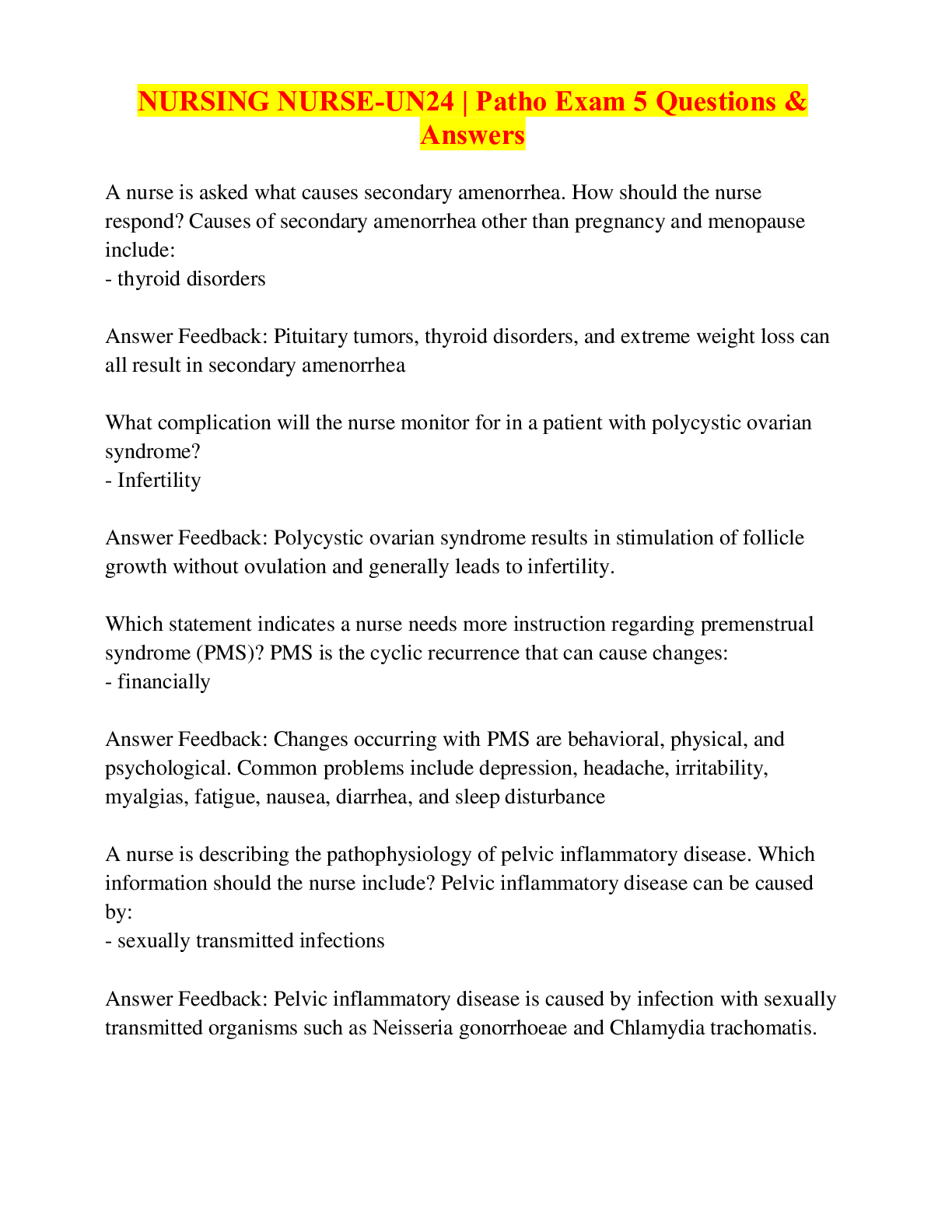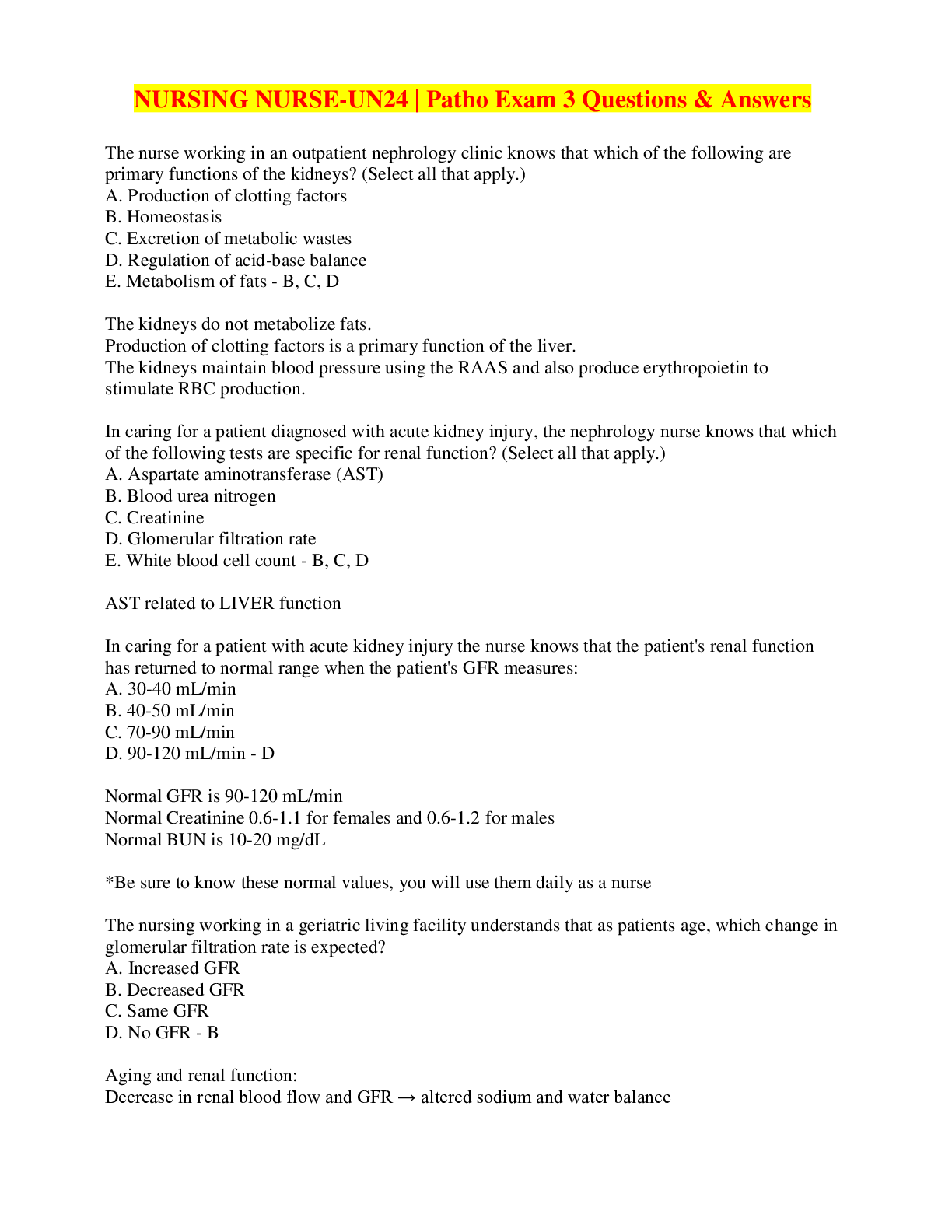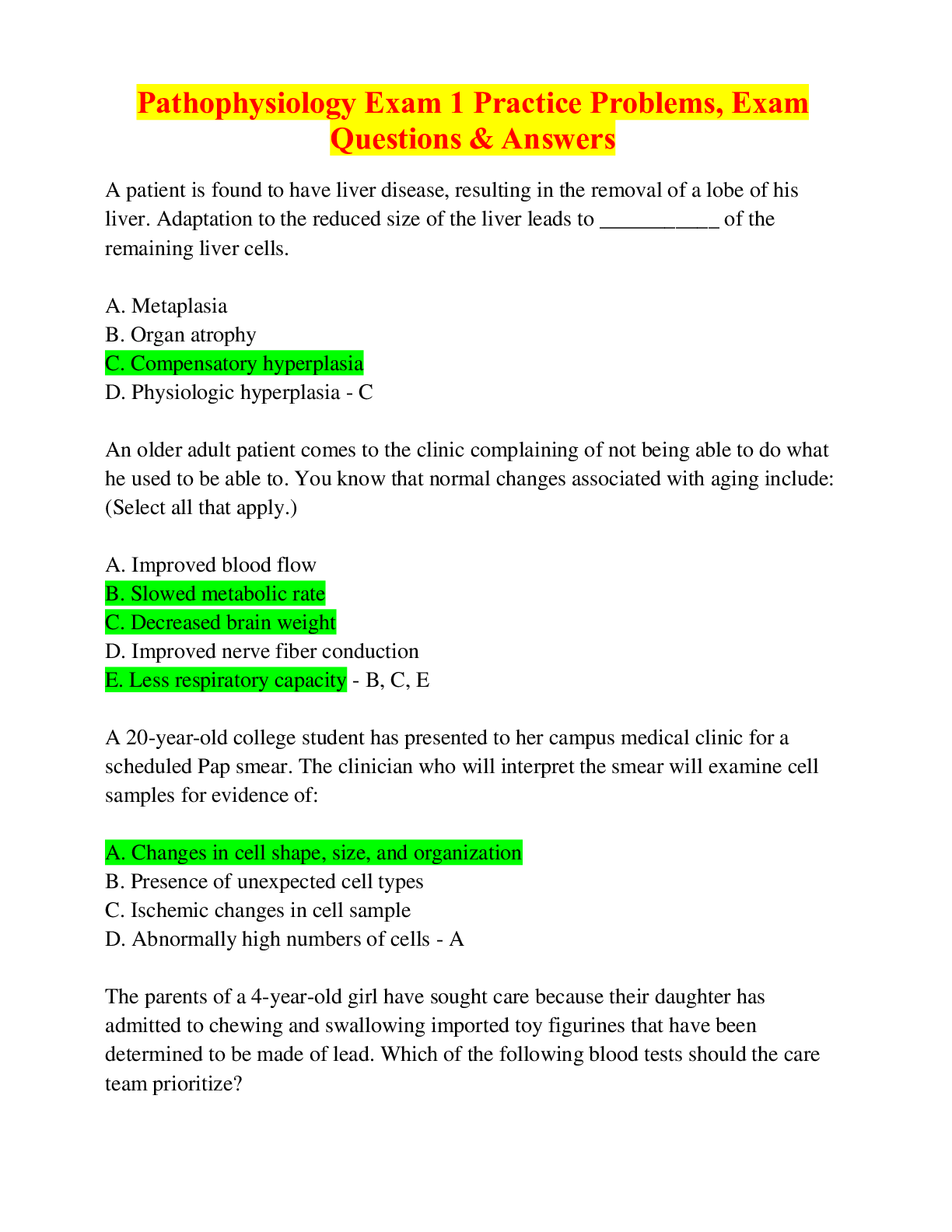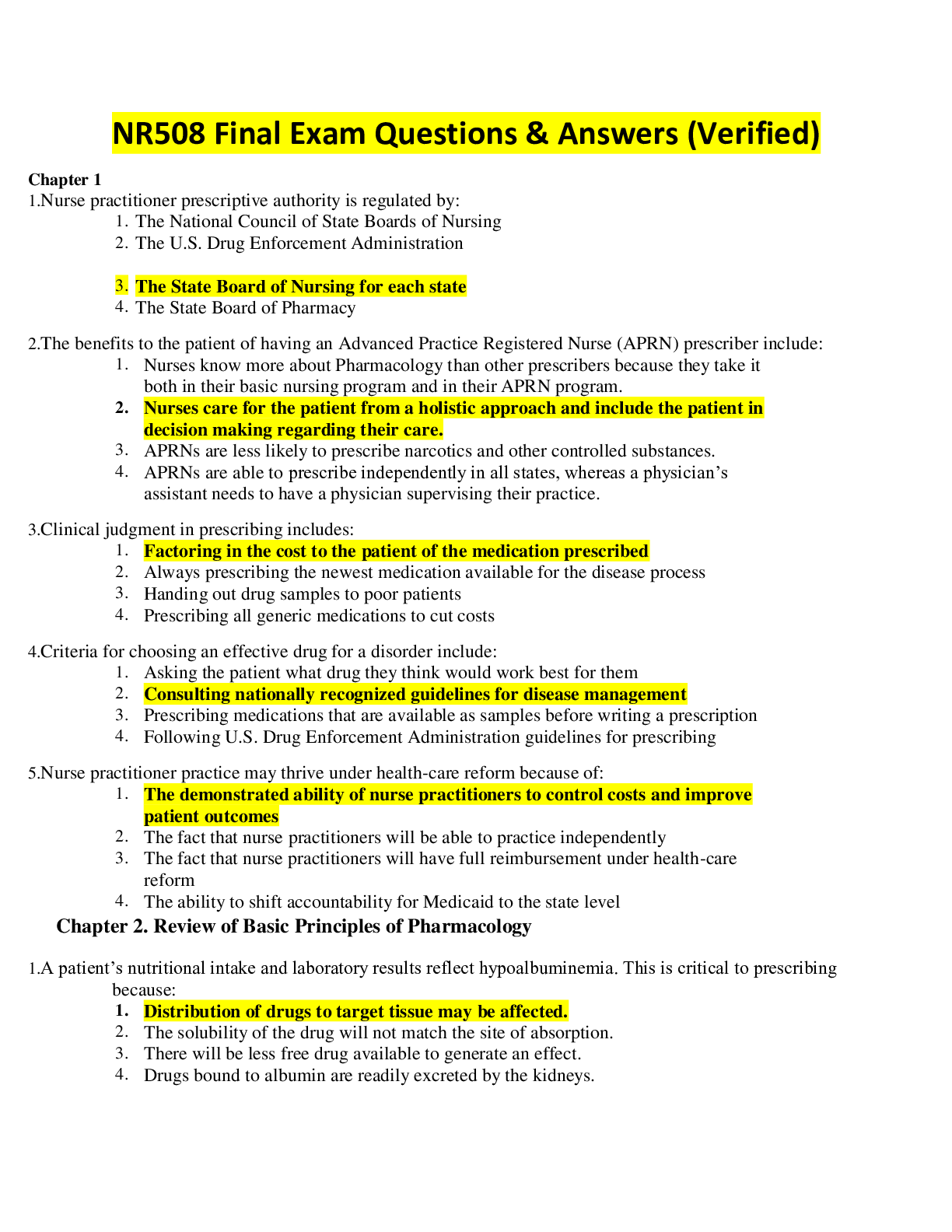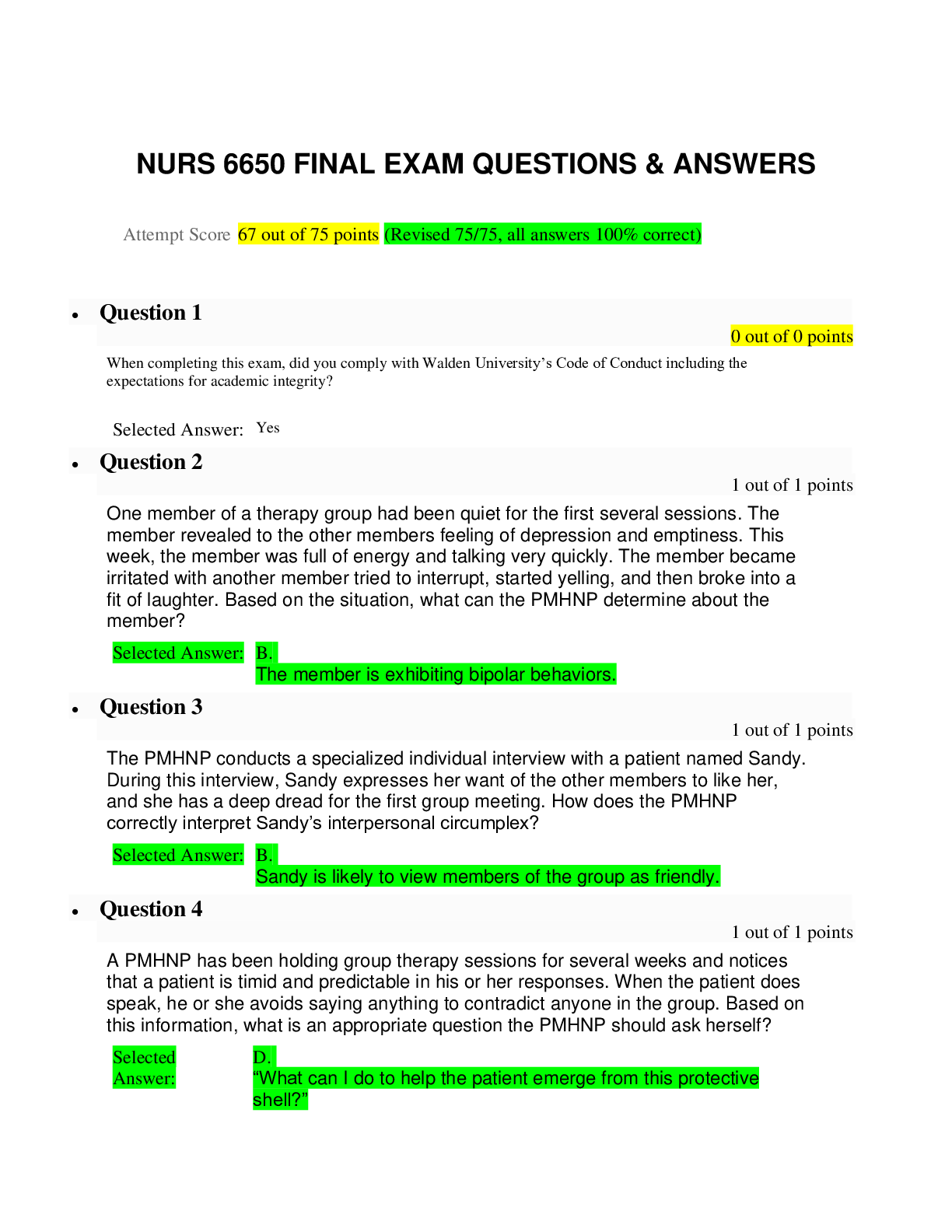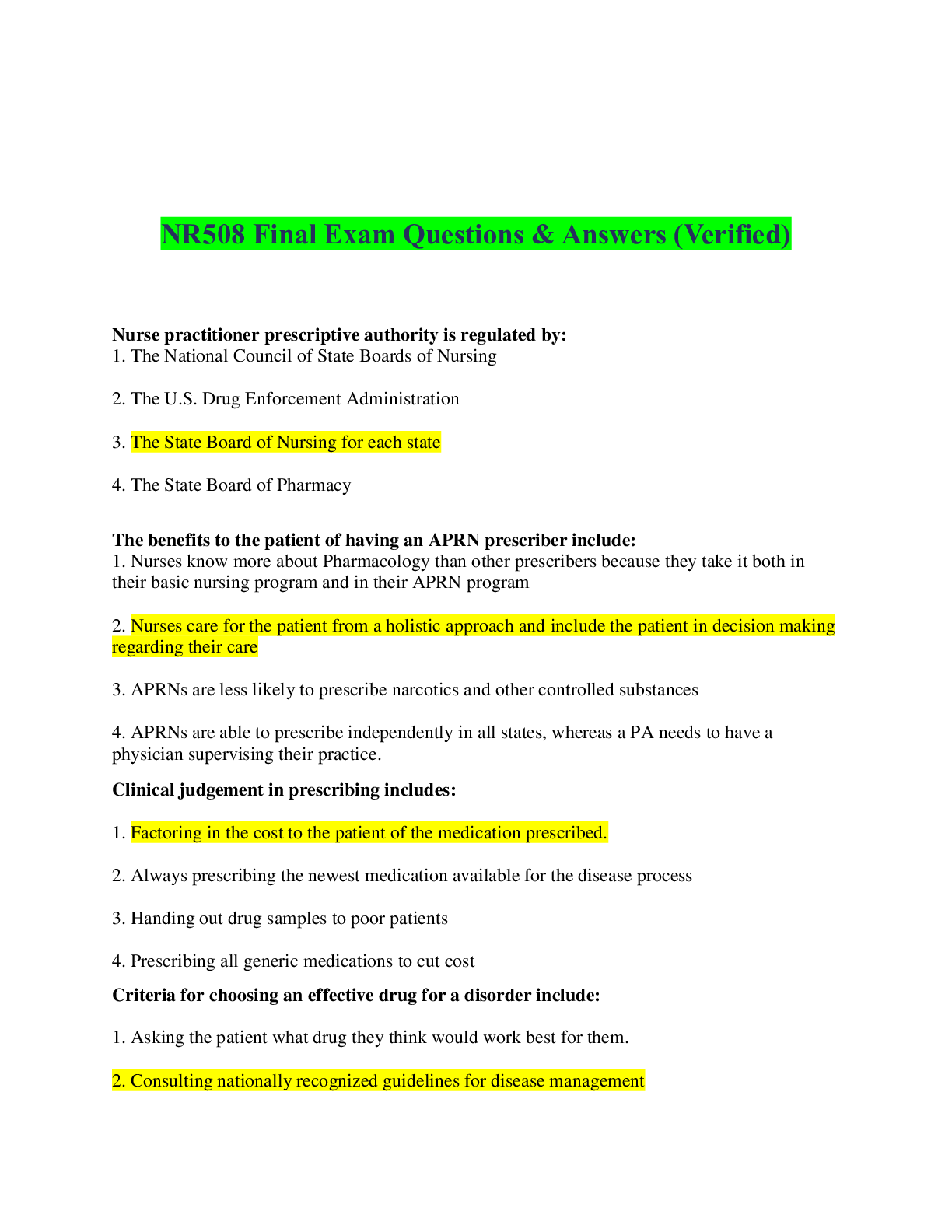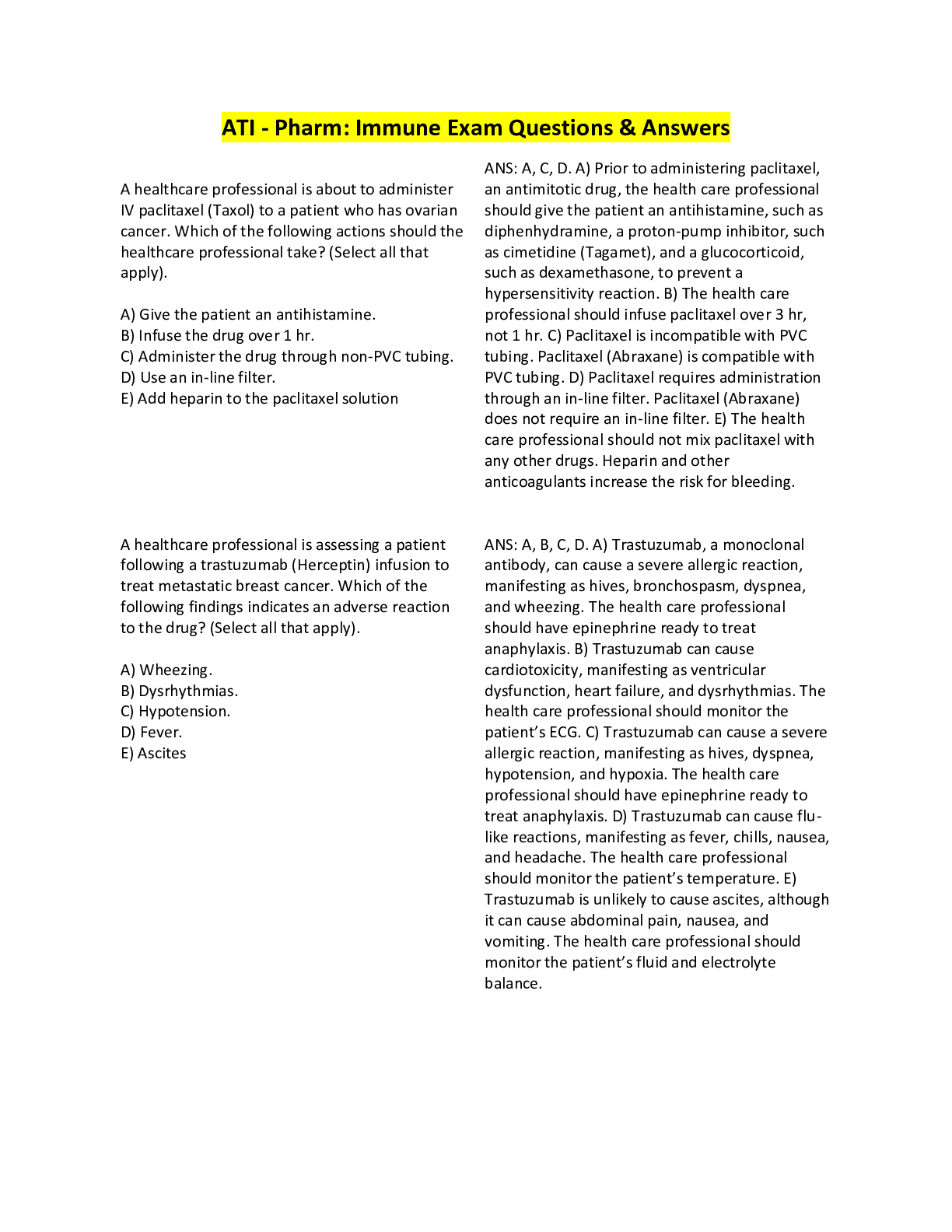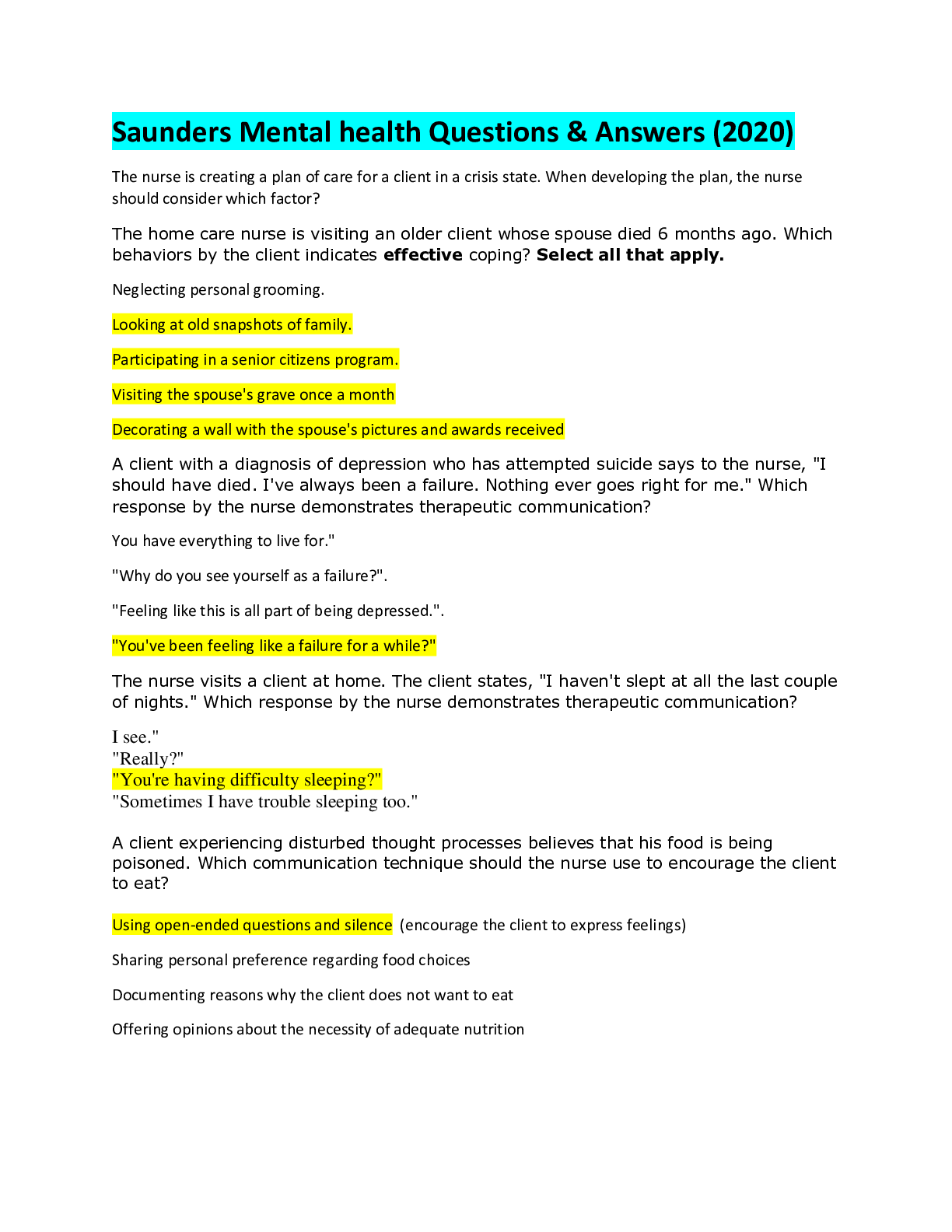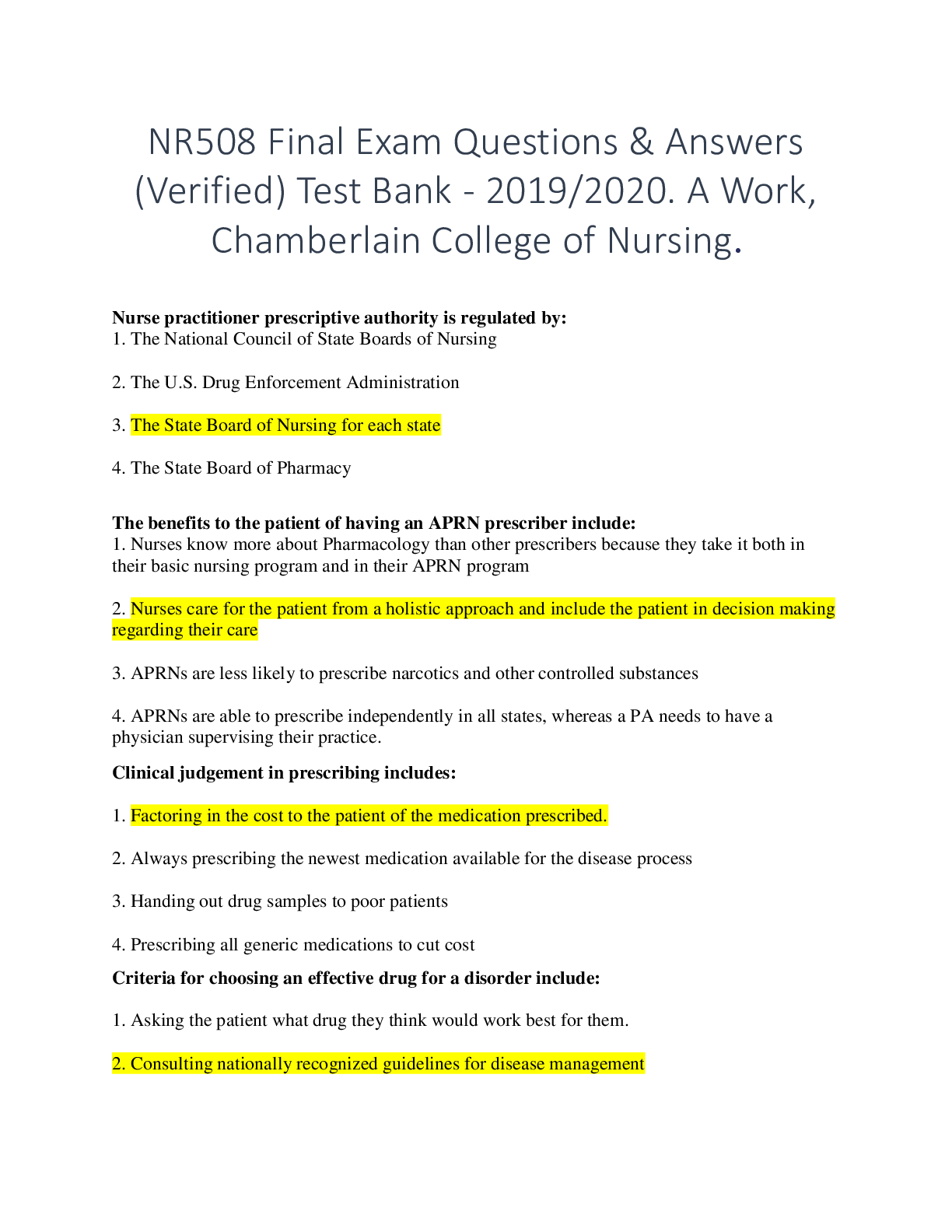Pharmacology Final Exam REVIEW, Real Exam Questions & Answers, 2024
Document Content and Description Below
Pharmacology Final Exam REVIEW, Real Exam Questions & Answers, 2024-A patient about to receive his morning dose of digoxin has an apical pulse of 70 beats per minute. What will the nurse do? A. Admin... ister the dose. B. Administer the dose and notify the physician. C. Check the radial pulse for 1 full minute. D. Withhold the dose and notify the - A. Administer the dose. In assessing a patient before administration of a cardiac glycoside, the nurse knows that what condition can predispose a patient to digitalis toxicity? A. Hypokalemia B. Hyperkalemia C. Hypocalcemia D. Hypernatremia - A. Hypokalemia; control ventricular response to atrial fibrillation and a derived from foxglove. Digoxin is the only available cardiac glycoside---positive inotropic---inhibits sodium potassium pump (adenosine tripphophatase) Sodium and calcium rise. Cholinergic stimulation via the vagus nerve of Parasympathetic nervous system. ---Negative chronotropic---Negative Dromotropic effect While assessing a patient who is receiving intravenous digitalis, the nurse recognizes that the drug has a negative chronotropic effect. How would this drug effect be evident in the patient? A. Increased heart rate B. Decreased heart rate C. Decreased conduction D. Increased ectopic beats - B. Decreased heart rate A patient has been taking digoxin at home but has taken an accidental overdose and has developed toxicity. He has been admitted to the telemetry unit where the physician has ordered digoxin immune Fab (Digibind). The patient asks the nurse why the medication is ordered. What is the nurse's best response? A. "It works faster than digoxin." B. "It is safer than digoxin and can be taken orally." C. "It helps to convert the irregular heart rhythm to a more normal rhythm." D. "This drug is an antidote to digoxin and will help to lower the blood levels." - D. "This drug is an antidote to digoxin and will help to lower the blood levels." (severe bradycardia, advanced heart block, ventricularr tachycardia, fibrillation, and hyperkalemia); available in parental form. Clinical signs and symptoms are monitored NOT serum levels----used for systolic heart failure and atrial fibrillation. 5. A patient has been placed on a milrinone infusion as part of the therapy for end-stage heart failure. What risks involved with this drug will the nurse keep in mind while assessing this patient during the infusion? A. Hypertension B. Hyperkalemia C. Nausea and vomiting D. Cardiac dysrhythmias - D. Cardiac dysrhythmias (contraindictated with ventricular tachycardia, and fibrillation) used for treatment of atrial fibrillation. Available in Oral and injection form. 6. A patient with atrial fibrillation was started on digoxin, and 1 week later a digoxin level was drawn. Which result is within normal therapeutic levels for digoxin? A. 0.4 ng/mL B. 0.7 ng/mL C. 2.1 ng/mL D. 2.6 ng/mL or higher - B. 0.7 ng/mL (normal 0.5 to 2.0 ng/mL 7. When reviewing the list of medications taken by a patient who will be receiving a new prescription for digoxin, the nurse would be concerned about which medication that may interact with the digoxin? A. aspirin B. acetaminophen (Tylenol) C. furosemide (Lasix) D. vitamin K - C. furosemide (Lasix); (loop Diuretics); numerous ones on page 341 8. The nurse is reviewing discharge teaching for a patient who will be taking digoxin (Lanoxin) therapy. The patient should be taught to avoid which foods when taking the digoxin? A. Leafy green vegetables B. Dairy products C. Grapefruit juice D. Bran muffins - D. Bran muffins 9. In assessing a patient before administration of a cardiac glycoside, the nurse knows that which lab result can increase the toxicity of the drug? A. Potassium level 2.8 mEq/L B. Potassium level 4.9 mEq/L C. Sodium level 140 mEq/L D. Calcium level 10 mg/dL - A. Potassium level 2.8 mEq/L (low potassium normal is 3.5 to 5.0) 10. The nurse administering the phosphodiesterase inhibitor inamrinone recognizes that this drug should have a positive inotropic effect. This effect will result in increased A. heart rate. B. blood vessel dilation. C. force of cardiac contraction. D. conduction of electrical impulses across the heart. - C. force of cardiac contraction. (increase cAMP) positive inotropic (by more calcium available in SR)effect and vasodilation, (inodilators)---positive chornotropic effect); USED IN ICU; ADVERSE EFFECT...thrombocytopenia, dysrhythmia, ventricular, hypotension and angina, hypokalemia, tremor. 11. The nurse notes in a patient's medical record that nesiritide has been ordered. Based on this order, the nurse interprets that the patient has which disorder? A. Atrial fibrillation B. Acutely decompensated heart failure with dyspnea at rest C. Systolic heart failure D. Long-term treatment of heart failure. - B. Acutely decompensated heart failure with dyspnea at rest SELECT ALL THAT APPLY: 1. When a patient is experiencing digoxin toxicity, which clinical situation would necessitate the use of digoxin immune Fab (Digibind)? Select all that apply. A. The patient reports seeing colorful halos around lights. B. The patient's serum potassium level is above 5 mEq/L. C. The patient is experiencing nausea and anorexia. D. The patient is experiencing severe sinus bradycardia that does not respond to cardiac pacing. E. The patient has taken an overdose of greater than 10 mg of digoxin. - B. The patient's serum potassium level is above 5 mEq/L. D. The patient is experiencing severe sinus bradycardia that does not respond to cardiac pacing. (E) might be right as well a person taking 10mg of digoxin is a indication of toxicity...page 340 states life threatening digoxin overdose in adults and 4 mg in children) 2. Which drug classes are considered first-line treatment for heart failure? Select all that apply. A. Angiotensin converting enzyme (ACE) inhibitors B. Angiotensin II receptor blockers (ARBs) C. Digoxin (cardiac glycoside) D. Beta-blockers E. Nesiritide (Natrecor), the B-type natriuretic peptide - ACE ARBS Beta-blockers loop diuretics 1.When administering topical nitroglycerin ointment, the nurse should use which technique? A. The ointment should be applied on the chest over the heart. B. The ointment should be used only in the case of a mild angina episode. C. The old ointment should be removed before new ointment is applied. D. The ointment should be massaged gently into the skin, then covered with plastic wrap. - C. The old ointment should be removed before new ointment is applied. 2.The nurse is giving intravenous nitroglycerin to a patient who has just been admitted because of an acute myocardial infarction. Which statement is true regarding the administration of the intravenous form of this medication? A. Specific nonpolyvinylchloride (non-PVC) plastic intravenous bags and tubing must be used. B. It is stable for only 24 hours after preparation. C. It can be given in infusions with other medications. D. The solution will be slightly colored green or blue. - A. Specific nonpolyvinylchloride (non-PVC) plastic intravenous bags and tubing must be used. 3.A 53-year-old man has been admitted for evaluation of chest pain. He has been diagnosed with angina and will be given a prescription for sublingual nitroglycerin tablets. When teaching the patient how to use sublingual nitroglycerin, what instruction should the nurse include? A. Take up to five doses at 15-minute intervals for an angina attack. B. If the tablet does not dissolve quickly, chew the tablet for maximal effect. C. If the chest pain is not relieved after one tablet, call 911 immediately to activate emergency medical services. D. Wait 1 minute between doses of sublingual tablets, up to three doses. - C. If the chest pain is not relieved after one tablet, call 911 immediately to activate emergency medical services. [Show More]
Last updated: 1 year ago
Preview 1 out of 30 pages
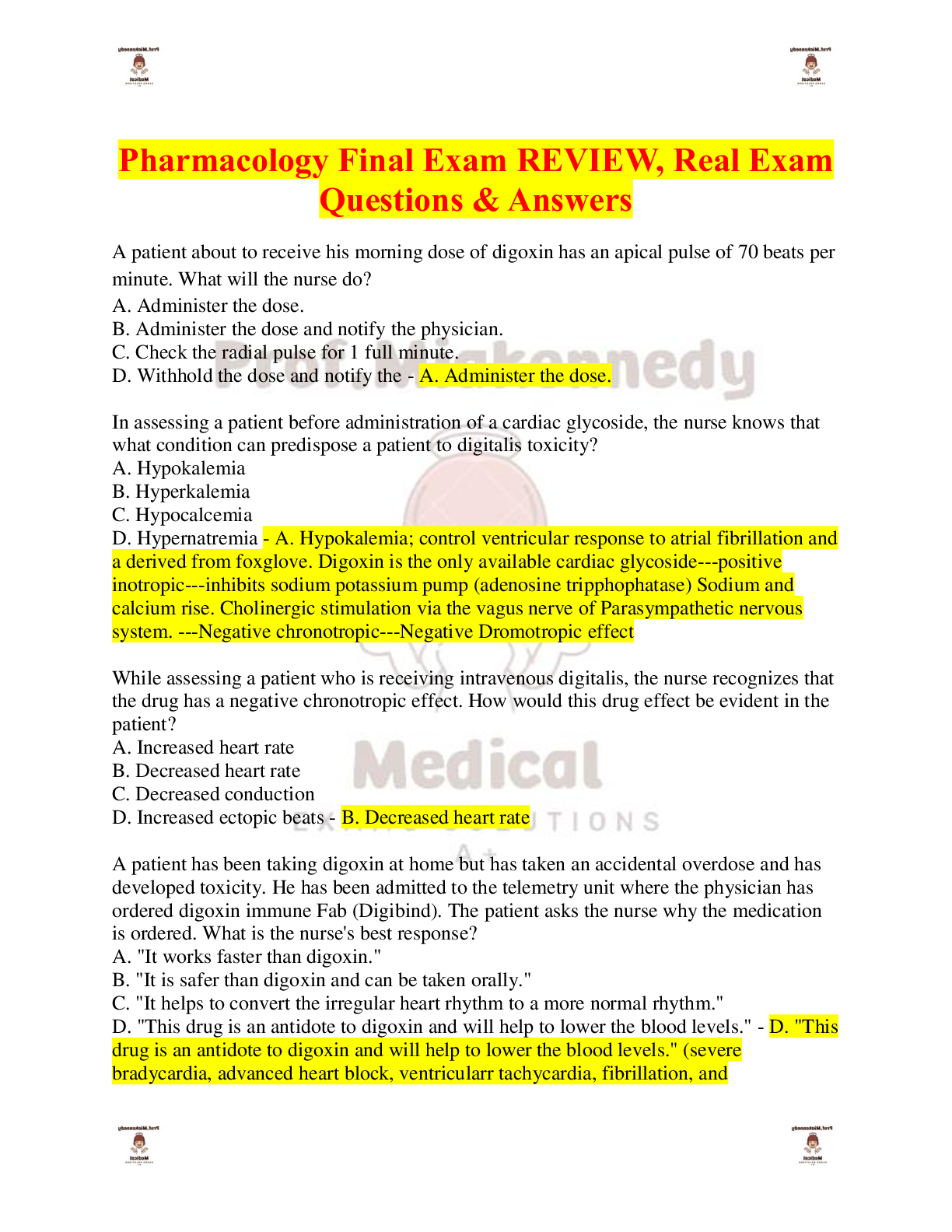
Buy this document to get the full access instantly
Instant Download Access after purchase
Buy NowInstant download
We Accept:

Reviews( 0 )
$13.50
Can't find what you want? Try our AI powered Search
Document information
Connected school, study & course
About the document
Uploaded On
May 29, 2024
Number of pages
30
Written in
Additional information
This document has been written for:
Uploaded
May 29, 2024
Downloads
0
Views
36

